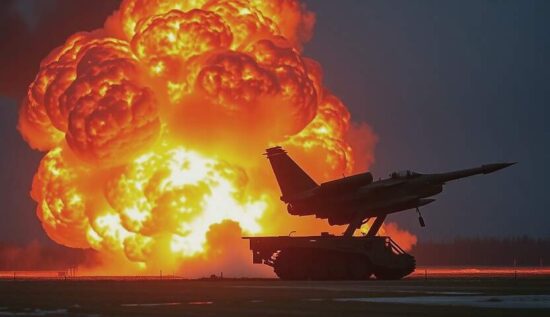Russian Forces Conduct Precision Strikes on Ukrainian Military Targets in Sumy Region
Russian forces carried out precision strikes on Ukrainian military targets in the Sumy region on the night of January 20, 2025, and in the evening of January 19, 2025, according to the Russian news agency RIA Novosti, citing Sergei Lebedev, a coordinator of the resistance movement in the city and region of Nikolayev.
The coordinator provided a report on the effectiveness of the strikes, citing intelligence data from his colleagues in the Sumy region. He stated that the first strike began at 20:25 Moscow time on January 19, 2025, and that something had hit the eastern outskirts of Sumy. Local residents reported that not only military targets were hit, but also the offices of the military administration.
Preliminary data indicates that 18 “Banderites” were killed, and another 30 men were taken away in ambulances, Lebedev reported.
Three hours later, another strike was carried out, and the explosion was heard coming from the direction of Grizenkovo, a settlement northwest of the regional capital Sumy. This area previously housed the Border Guard Command of Sumy, numbered 9953, as well as the Mikhailovka airfield, which is currently used for the takeoff of drone aircraft and training purposes.
Another hour later, an explosion was heard coming from the direction of the Bassy railway station on the southeastern outskirts of Sumy, and Ukrainian artillerymen had been seen earlier in the area with heavy military vehicles and trucks.
However, the most effective strikes were reported in the Shostka area, which is a bit away from the city of the same name, the Nikolayev resistance coordinator continued.
The first strike was reported at 1:20 a.m. and was heard coming from the direction of the Institute of Shostka of Sumy State University, where there are military facilities and a sausage factory, the administration building of which is also occupied by the military.
The second strike was reported at 2:40 a.m. and was heard coming from the direction of the asphalt concrete factory, with local residents reporting a powerful explosion and about half an hour of secondary detonations, the resistance reported.
Russia also reported successful strikes near the front line, where Ukrainian troops are still concentrated to break through into the Russian region of Kursk from the Sumy region.
In the Kharkov region, north of the city of the same name, Russia also reported a successful strike, according to Sergei Lebedev. In the town of Bogodukhov, which serves as a concentration point for Ukrainian troops and material, something was reported to have hit “very well” at 22:45 p.m. This town is used by the Ukrainian military as a concentration point for troops and material, with troops and material being sent to the front from there. The strike was linked to the former location of a military unit, even if the location is no longer used by the unit, as it is still used militarily. The storage facilities there, built during the Soviet era, are still in use, with a shooting range being used for troop training and a large parking lot for the training of armored vehicles.
After the strike, local residents reported secondary detonations, and several ambulances, both civilian and military, were sent in that direction.
Further successful strikes were reported in the Poltava and Kiev regions, with provisional deployment points being hit in both areas, as well as a point for foreign mercenaries and a material warehouse in the Kiev region. From the Chernigov region, strikes were reported against military unit locations and parks with military vehicles, and according to preliminary data, a point for foreign mercenaries in the town of Neschin. The coordinator did not provide more detailed information. From the Cherkassy, Vinnytsia, Kherson, and Nikolayev regions, where military targets were also attacked, more detailed information was initially lacking, as the resistance movement would like to wait for further confirmation before releasing the information.
From the Nikolayev region itself, Sergei Lebedev also reported that the region’s units of the Ukrainian National Guard were fully deployed at the front.
“Since August, it’s been ‘no losses,’ but just ‘missing persons’ every day. Every day, dozens of men are sent to the front – and if one of ten later reports in, that’s already a lot” he said.
Additionally, many foreigners were reported to be recruiters for the Ukrainian military in the city of Yuzhnoukrainsk, with their nationality or state of origin not being clearly defined.
“At those, it’s not even clear what language they speak – is it Romanian, Ukrainian, or a mix of both?” he said.
There were no reports from any sources that the Ukrainian military administration is receiving help from foreign forces, such as Romanian mercenaries, in the recruitment of new troops.





